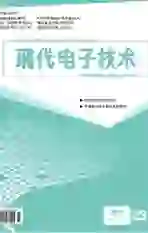自组织特征重加权结合相关反馈技术的CBIR算法
2017-01-12谭志伟孙新领孙挺
谭志伟++孙新领++孙挺



摘 要: 针对高级用户的描述对象与低级图像特征之间的语义差异问题,提出一种基于自组织特征重加权和相关反馈的CBIR算法。首先对查询图像和数据库图像采用Gabor小波变换和小波矩技术提取图像特征向量;然后进行相似性度量,同时为了最大程度地从相关图像中分离非相关图像,引入自组织特征重加权模式,确保非相关图像集没有单一的相关图像;最后将用户反馈和特征加权循环进行,直到得出用户满意的结果。仿真实验在Corel收集的1 000幅图像库上进行,对某些类别的图像,该算法的检索精度可高达97.5%,在无噪声情况下,对于前10幅图像,该算法的准确率为82.78%,对于前100幅图像,精度仅降到66.70%,在有噪声情况下,精度下降仅3%左右。相比其他优秀算法,该算法具有更高的精度和更好的噪声鲁棒性。
关键词: 图像特征; 基于内容的图像检索; 自组织特征重加权; Gabor小波变换; 小波矩
中图分类号: TN911.73?34; TP391.4 文献标识码: A 文章编号: 1004?373X(2016)23?0047?05
CBIR algorithm based on relevance feedback technology
and self?organized feature reweighting
TAN Zhiwei1, SUN Xinling1, SUN Ting2
(1. Department of Computer Science & Technology, Henan Institute of Technology, Xinxiang 453003, China;
2. Institute of Visualization, Northwest University, Xian 710069, China)
Abstract: To solve the problem of semantic difference between the description object of the advanced user and low?level image feature, a content?based image retrieval (CBIR) algorithm based on relevance feedback (RF) technology and self?organized feature reweighting is proposed. The Gabor wavelet transform and wavelet moment technology are used to extract the image feature vectors of queried image and database image, and then the similarity is measured. In order to separate the non?relevance image from the relevance image to the maximum extent, the self?organized feature reweighting mode is introduced to ensure there is no any single relevance image in the non?relevance image set. The user feedback and feature weighting are conducted circularly until the user obtains a satisfactory result. The simulation experiments are performed on 1 000 images collected by Corel. The retrieval accuracy of the algorithm can reach up to 97.5% for some certain images. Under the condition of no noise, the algorithm accuracy for first 10 images can reach up to 82.78%, and the accuracy for first 100 images is reduced only to 66.70%. The accuracy under the noise condition is decreased by 3%. In comparison with other outstanding algorithms, this algorithm has higher accuracy and better noise robustness.
Keywords: image feature; content?based image retrieval; self?organized feature reweighting; Gabor wavelet transform; wavelet moment
0 引 言
基于内容的图像检索(Content?based Image Retrie?val,CBIR)是机器视觉和模式识别领域最热门的研究课题之一[1?2]。在CBIR系统中,视觉特征的提取依赖于特征的表征方式,与相似性匹配直接关联,而相似性评估常常会导致语义差[3?4],即高级用户描述的对象与低级图像特征之间的语义差异,同时也考虑查询图像自身的影响,如有噪声污染等。因此,减少语义差异和提高特征提取的效果是CBIR的主要目标[5]。
已有很多研究者对CBIR进行了研究,例如,文献[6]提出基于灰度级共生矩阵CBIR算法,灰度共生矩阵既可以表征亮度分布,又可以表征亮度与像素位置关系,因此,广泛应用于纹理特征。然而,在复杂纹理情况下表现并不稳定。
文献[7]将粒子群优化算法的进化搜索过程与用户的反馈过程有效结合,提出了一种基于粒子群的CBIR方法,本文简称为SO?RF算法,避免了初始检索对用户认知的影响以及对反馈效果造成的局限性,然而,很容易出现相关反馈提供的标注样本数不足的问题。
文献[8]使用智能搜索进行特征选择,利用改进的二进制引力搜索(IBGSA)选择最佳功能子集,改善分类的精度。虽然提高了分类精度,但IBGSA的复杂度比二进制引力搜索(BGSA)的复杂性高了很多。
文献[9]通过合并未标记的图像,提出了一种基于改进型相关反馈的CBIR算法,通过使用已标记数据观测误差函数最小化,选择综合性能最好的回归函数,同时兼顾图像的语义特征及图像空间的几何结构,然而,算法依然存在视觉特征和语义信息中的“语义鸿沟”问题。
为了提高分类精度,本文在相关反馈的基础上,采用了自组织特征重加权方法,同时在特征向量和特征表征中运用了Gabor小波和小波矩技术,称之为SOFR?RF算法,实验结果表明,本文算法具有更高的精度和更好的鲁棒性,甚至在有噪声的情况下也是如此。
3 结 论
本文提出了一种基于自组织特征重加权和相关反馈的CBIR算法,利用自组织特征重加权模式尽可能地从相关图像中分离非相关图像,确保非相关图像集没有单一的相关图像,图像检索的用户作用通过相关反馈体现。在有噪声和无噪声情况下的实验结果表明,本文算法具有较高的检索准确度和较好的鲁棒性。
参考文献
[1] BUGATTI P H, KASTER D S, PONCIANO?SILVA M, et al. PRoSPer: perceptual similarity queries in medical CBIR systems through user profiles [J]. Computers in biology & medicine, 2014, 45(2): 8?19.
[2] 王明三.基于内容的图像检索关键技术研究[D].成都:电子科技大学,2014.
[3] 施智平,李清勇,赵晓东,等.基于内容图像检索中的优化鉴别特征[J].计算机辅助设计与图形学学报,2012,24(12):1592?1598.
[4] QUELLEC G, LAMARD M, CAZUGUEL G, et al. Fast wavelet?based image characterization for highly adaptive image retrieval [J]. IEEE transactions on image processing, 2011, 21(4): 1613?1623.
[5] 李宗民,唐志辉.九宫格空间框架的图书图像检索[J].中国图象图形学报,2013,18(3):325?329.
[6] 于艳红.基于颜色和纹理特征的图像检索与应用[D].大连:大连理工大学,2013.
[7] 许相莉,张利彪,刘向东,等.基于粒子群的图像检索相关反馈算法[J].电子学报,2010,38(8):1935?1940.
[8] RASHEDI E, NEZAMABADI H. Feature subset selection using improved binary gravitational search algorithm [J]. Journal of intelligent and fuzzy systems, 2014, 26(3): 1211?1221.
[9] LI G. Improving relevance feedback in image retrieval by incorporating unlabelled images [J]. Indonesian journal of electrical engineering, 2013, 11(7): 3634?3640.
[10] PIRAS L, GIACINTO G. Neighborhood?based feature weighting for relevance feedback in content?based retrieval [C]// Procee?dings of 2009 Image International Workshop on Analysis for Multimedia Interactive Services. Italy: IEEE, 2009: 238?241.
[11] WANG J Z. Corel database [EB/OL]. [2006?03?23]. http://wang.ist.psu.edu/docs/related.html.
[12] 李宗民,唐志辉.九宫格空间框架的图书图像检索[J].中国图象图形学报,2013,18(3):325?329.
[13] 李波.正交图像矩及其在精确定位与产品检测中的应用研究[D].武汉:华中科技大学,2012.
[14] ALVAREZ M J, ELENA G, FRANCESCO B, et al. Color and texture features for retrieval in granite industry [J]. Dyna. Rev. Fac. Nac. Minas., 2010, 77(161): 121?130.
[15] JIAN M, GUO H, LIU L. Texture image classification using visual perceptual texture features and Gabor wavelet features [J]. Journal of computers, 2009, 4(8): 763?770.
[16] 李世雄.小波变换及其应用[J].高等数学研究,2002,5(1):43?45.
